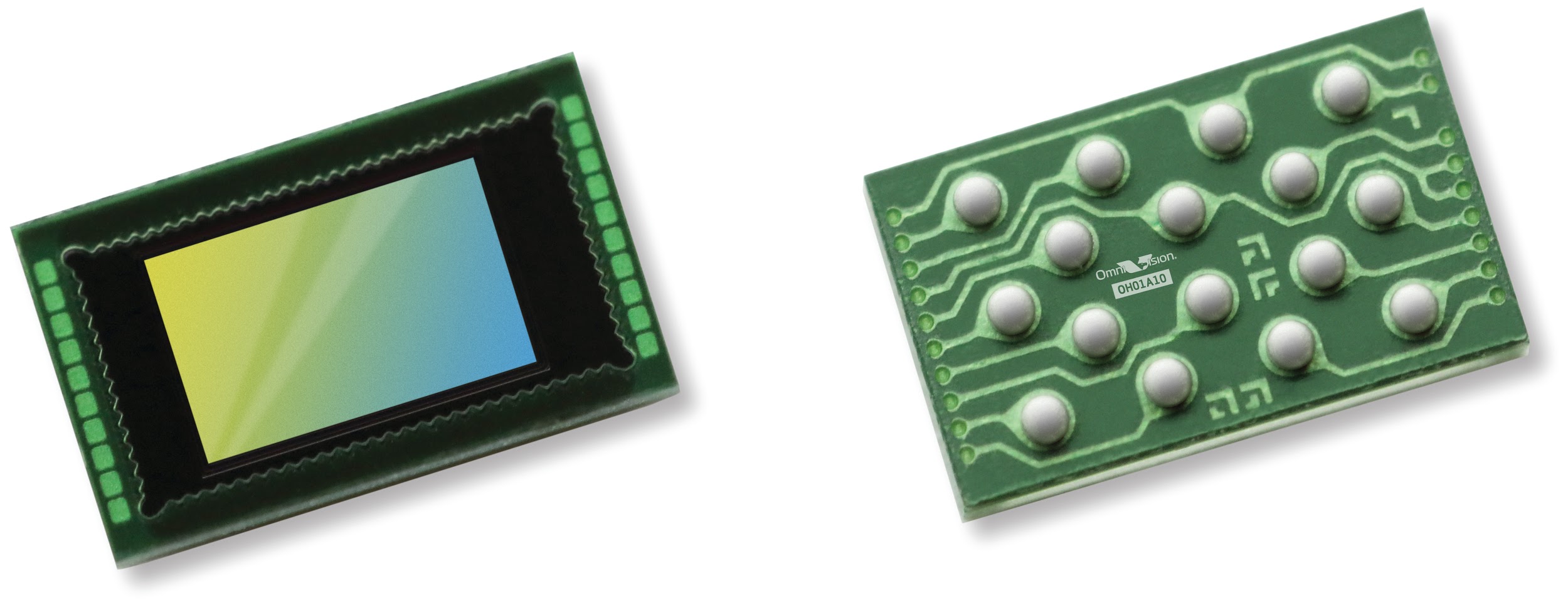By Heather Hamilton, contributing writer

OmniVision’s OH01A medical sensor. Source: OmniVision.
CMOS image sensor technology keeps on improving in performance, size, and power consumption, helping them find homes in higher-reliability applications such as automotive, medical, and security. Higher functionality integration also makes the image sensors well-suited for security cameras, machine vision, and medical instruments.
OmniVision Technologies Inc. believes that further improvements will be made in several areas. These include shrinking pixel size, increasing formats (more pixels, moving from 24M to 100M), higher-speed image sensors (frames per second [fps] from 30 fps to 60 fps to 120 fps to 240 fps), lower-power-consumption image sensors, and smarter image sensors (such as advanced processing and image capture in the same chip).
“In the past 10 years, CMOS image sensors have evolved from toys to instruments in applications such as security, automotive, and medical,” said Dr. Boyd Fowler, chief technology officer with OmniVision. Amidst what Fowler described as “continuous rapid technology and product improvement and development,” the company is dedicated to investing in next-generation semiconductor processes, circuits, systems, and algorithm technologies — among them, a pair of recently announced medical image sensors, designed to offer high functionality in a tiny size.
In a press release, the company describes the OH01A as the world’s first medical image sensor to provide 1,280 x 800 resolution at a rate of 60 fps. The sensor measures 2.5 x 1.5 mm.
OmniVision hopes that the sensor presents an optimal solution for endoscope and urology applications. Tahzeeb Gunja, principal marketing and business development manager at OmniVision, emphasizes the need for size in these applications, adding, “They need a wide viewing angle and close focus distance with low power consumption to reduce heat and improve patient comfort.”
The OH01A sensor has a 1/11-inch optical format, a 1.1-micron pixel, RAW data output, and 1,280 x 800 resolution that can be resized to 720p for HD (16:9 aspect ratio) or 800 x 800 for square displays. It boasts 25% less power consumption than past medical image sensors and can be synchronized to build 3D images.
The second sensor, called the OV2741, offers 1080p HD resolution, a broadband double anti-reflective coating to eliminate glare, and easy integration all in a tiny package. The sensor is most useful in endoscopic devices used in diagnosis and surgery, including airway management and gastrointestinal applications, said OmniVision.
The sensor has a ⅙-inch optical format for low-light operation, a 1.4-micron pixel size, and support for RAW data output. The low power consumption of 90 mW, operating at 60 fps and full HD resolution, keeps the distal tip of the endoscope cooler for patient comfort. Two sensors can be synchronized to allow for 3D video. The device also integrates one-time-programmable (OTP) memory and a pulse-width modulator (PWM) to drive LED illumination without an external driver IC.
“The future of imaging is the confluence of image capture and recognition,” said Fowler. “OmniVision is uniquely positioned to enable this revolution through dedicated research and development efforts, close customer interactions, and best-in-class manufacturing.”
Advertisement
Learn more about Electronic Products Magazine





